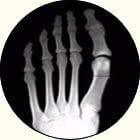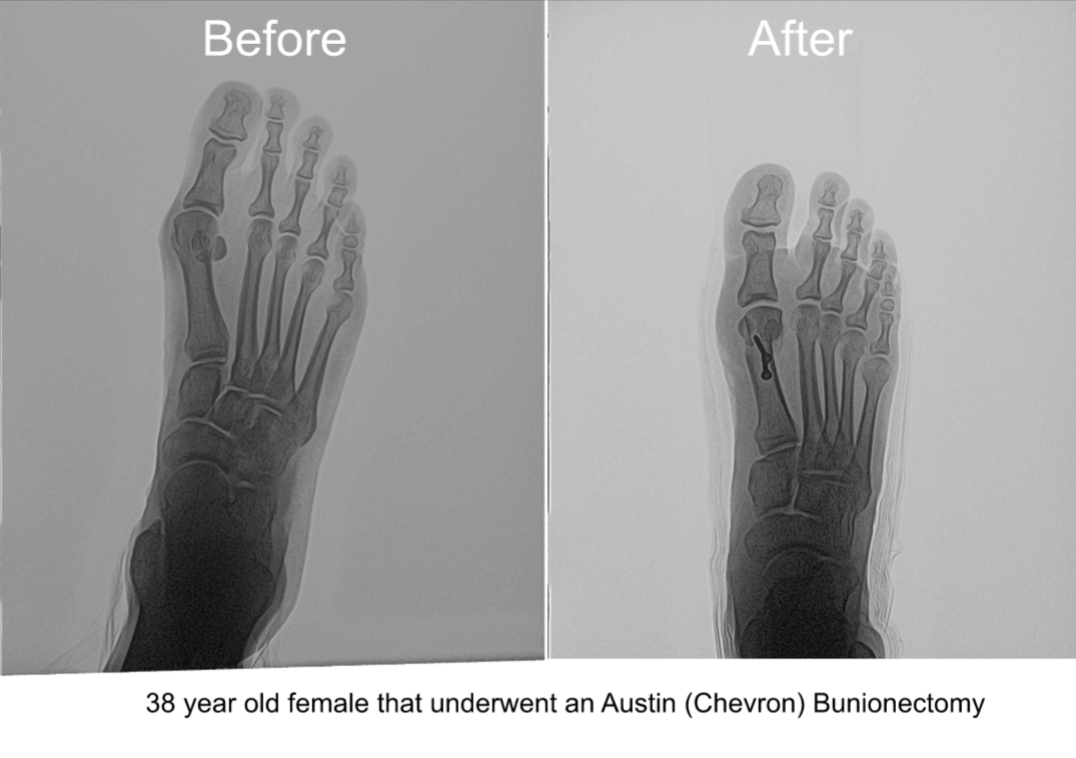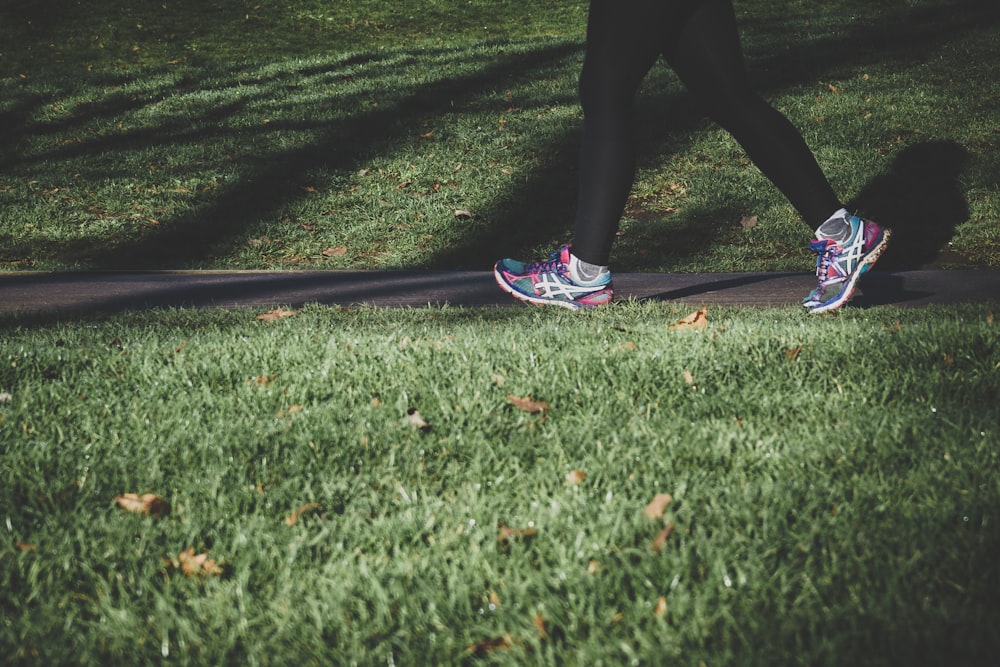bunion pain
Displaying items by tag: bunion pain
Dr Brandon Nelson, A Double Board-Certified Physician & Surgeon, Discusses Patients Decide to Have Bunion Surgery

Bunions form on the big toe and are caused by a rotational malalignment of the 1st metatarsal. They are usually inherited and can get bigger with time. Many people will begin to find it difficult to wear shoes, exercise and walking will become painful. I will discuss why many people decide to have bunion surgery below.
Reduction of Pain/Discomfort
This is the most common reason patients seek to have bunion surgery. Many experience pain with walking every day. This can make even going to the store challenging. The bunion gets bigger with time and creates more inflammation in the foot. The surgery aims to realign the foot and reduce bunion pain.
Preventing Further Progression
Many know this well, but your bunion grows and the bone shifts farther out of place. This can lead to other issues like hammer toes, flatfeet, and arthritis. The goal of surgery is to stop the bunion from increasing in size and prevent the bunion from preventing more severe foot complications.
Improving Foot Function
Bunions cause significant foot impairments and function. This makes things like running and exercise difficult. Surgery not only helps fix the appearance of the foot but the overall function. The goal is to restore anatomical alignment and help the foot function in a more natural state.
Newer Techniques
It is important to know that bunion surgery is not a one size fits all. It should be customized to your foot structure. Newer techniques are available that decrease healing times and allow early ambulation.
Bunion surgery should not be taken lightly. You should seek a skilled bunion surgeon and have questions ready to ask your surgeon. If you would like a consultation for your bunion I can help. Call to make an appointment with me at 425-391-8666 or make an appointment online.
Sincerely,
American College of Foot & Ankle Surgeons
Issaquah’s Top Podiatrist & Bunion Surgeon
Dr. Brandon Nelson, A Double Board Certified Foot Physician & Surgeon, Issaquah’s Top Podiatrist, Discusses Bunion Surgery

Bunions can be quite painful and become a hindrance to everyday life. While there are some conservative measures that may provide some temporary relief the only long term solution is surgery.
First it is important to understand what a bunion is. A bunion is when the 1st metatarsal shifts out of place. This shifting gets worse with time and the bunion gets bigger. The visual result is the big toe starts to overlap the 2nd toe and the protuberance you see at the base of the big toe is the 1st metatarsal. To fix the bunion the 1st metatarsal needs to be realigned.
The realignment of the 1st metatarsal can happen in two ways. The first being you cut the bone and reposition it anatomically. This is probably the most common bunionectomy performed in the United States. It usually involves about 4-6 weeks in a walking boot and has great outcomes for smaller bunions. The next most common would be a fusion of the tarsometatarsal joint. This is a procedure that is for larger bunions or people with unstable foot structures. This surgery usually requires a period of non-weight bearing for 3-6 weeks. Both of these procedures can have great outcomes when utilized appropriately.
How do you know which bunion surgery is best for your foot? There are many factors to take into account. The overall foot structure, any other foot pathologies, lifestyle, recovery and age. I recommend seeing a foot and ankle doctor that operates on a lot of bunions.
If you have a bunion and would like a consultation I can help. Please call 425-391-8666 or make an appointment online with Dr. Nelson.
Sincerely,
Board Certified Physician & Surgeon
Issaquah’s Top Podiatrist & Foot/Ankle Surgeon
Dr Brandon Nelson, A Board-Certified Physician & Surgeon Discusses Bunion Pain

Bunions are a common presentation in my office. I see at least one new bunion patient a day. It is a common condition that can produce pain daily. We know that many bunions are inherited and get larger with time. They usually become painful as time goes on and the bunion spreads affecting the forefoot making activities uncomfortable.
Bunions are a separation of the first metatarsal from the second metatarsal. The first metatarsal begins to shift away from the other metatarsals or towards the other foot. When this occurs the big toe then begins to deviate in a direction away from the arch or towards the second toe. This is when things begin to change rapidly. If the first toe now slides under the second a crossover toe formation begins and the bunion changes in size rapidly. This is when most people present to my office and need help with the pain.
There are some conservative measures that are helpful for bunions including wider shoes and not going barefoot. It is important to note that no conservative measures will change the size of the bunion. I see all sorts of online appliances come into the office. These include splints, strapping devices and other items that state they will fix a bunion. But remember a bunion is from a bone moving out of alignment and this is impossible to correct on the outside of the foot.
If you have bunion pain I can help, call to make an appointment with me at 425-391-8666 or fill out a form online.
Sincerely,
American College of Foot & Ankle Surgeons
Dr Brandon Nelson, A Board-Certified Physician & Surgeon Discusses Bunion Pain and How to Fix It
.jpg)
Bunions are often a painful condition especially when trying to fit certain shoes or exercise. Let us first discuss what a bunion is then how we can relieve the pain.
A bunion results from a combination of familial inheritance and environmental factors. Meaning that if you do not have a genetic predisposition for a bunion, you will not create one by adding outside forces to your foot. Where this becomes important for example is high heel shoes. If you have a family history of bunions and you wear high heels you can accelerate the process of development of the bunion. Or if you are an avid exerciser like a runner this can speed up the development of a bunion.
So what is a bunion? Well, there is a common misconception that a bunion is growth. This is not true nothing grows with a bunion it is from a misaligned bone in the foot. The culprit is the 1st metatarsal. This bone begins to shift out of place and cause a bulge on the inside of the foot and continues to get worse until the big toe has rotated. The bunion will get bigger as time goes on and often can begin to force the other toes out of position. Bunions at this point become painful and hard to fit in shoes.
What can be done for bunion pain? There are a lot of different things I can provide to relieve bunion pain. It really requires an evaluation of the bunion. But generally, wider shoes can help and prevent going barefoot. There are other options that provide more relief, but it really depends on the stage of the bunion.
If you are experiencing bunion pain I can help call to make an appointment with me at 425-391-8666 or fill out a contact form online.
Sincerely,Dr Brandon Nelson
American College of Foot & Ankle Surgeons
Dr. Timothy Young, Board Certified Foot Surgeon Discusses Surgery for a Bunionette or Tailor's Bunion Surgery

A tailor's bunion is a problem, or the fifth metatarsal and the fifth metatarsal head protrude laterally or to the outside of the foot. This causes pressure and pain especially with shoes ski boots etc. This is usually a structural problem. The fifth metatarsal tends to angle outward away from the adjacent fourth metatarsal. Sometimes it is a simple problem and it's just enlargement of the head of the fifth metatarsal. From a surgical perspective this can be treated by surgically shaving down the bump. This tends to be a much quicker recovery.
This would involve the incision, surgically incising the joint capsule then shaving down the bone and using a surgical orthopedic burr to smooth that down area. After the bony prominence has been smoothed down and reduced the wound is flushed and the layers including the capsule subcutaneous layer and skin are all surgically repaired and sutured. This tends to be a quick recovery it can be as short as 3 weeks in a cast boot.
Give us a call today at 425-391-8666 or make an appointment online today.
Dr. Brandon Nelson Discusses How to Find The Best Bunion Surgeon

Bunion surgery can be a complex surgery. It depends on the nature of the bunion deformity and the overall foot structure. There are many factors that go into bunion deformity correction. Complicating factors can include overall flatfoot for high arch foot or lesser digital deformities including hammertoes. However some bunions are straightforward and are easily corrected. It is important to see a foot and ankle specialist that does or has done a large number of bunion deformities.
I also recommend trying to find a physician that has a surgery center as this is a huge cost-savings and time-savings for the patient. The majority of bunion procedures can be divided into head procedure or base procedure. The larger bunion deformities require base procedure and a smaller bunion deformity can be corrected with a head procedure. I also recommend patients make a list of questions regarding their foot in the overall correction recovery process. It is very important that patients choose a physician that they are comfortable with. I currently have been practicing for about 15 years and have fixed too many bunions count. If you have a bunion deformity and are contemplating getting it corrected nursing once available for conservative measures give us call today at 425-391-8666 or make an appointment online.
Dr. Brandon Nelson Discusses Why We Have the Best Options for Pain Control After Bunion Surgery

Bunion surgery provides great outcomes for patients that want relief from foot pain. Foot pain associated with a bunion can be very difficult to manage from a conservative standpoint. A lot of patients have tried getting bigger or wider shoes, which can create more room for the bunion to grow and make the situation worse. Patients will also apply pads, straps, splints or tape to the feet. This can be time consuming and cumbersome and again does nothing to fix or reverse the cause of bunions. The only way to actually fix the bunion is surgically. Bunion surgery has come a long way there are now new techniques we utilize to decrease down times and post-operative pain.
New techniques offer shorter recoveries and quicker returns to activity. Pain control can be challenging for both patients and physicians that are not as familiar as we are with modern techniques and medications. We use a long acting anesthetic to make the foot numb and prescribe different medications based on each individual patient and procedure performed. We have taken years to perfect our pain control regime and find the majority of our patient’s rate their pain as being well controlled. If you are contemplating bunion surgery come see us. With our pain control regime, onsite surgical center and years of experience this will create the best possible experience for you.
If you have bunion pain, give us a call today at 425-391-8666 or make an appointment online.
Dr. Brandon Nelson Discusses Treating Bunions Without Surgery

Treating bunions without surgery can be fairly challenging for patients that currently have pain or difficulty fitting shoe gear. Bunions or bone deformity can be inherited from your mom or dad. It is not uncommon for bunions to begin early in adolescence and continuing to develop into adulthood. Patients are often interested in conservative measures that are available to help with bunion pain. It is important to note that there are no conservative measures that are going to fix your bunion deformity.
Quite a few patients come in with all sorts of strapping devices and splinting devices from the Internet. None of these tools fixture bunion or change the shape of your bunion as this deformity is a malalignment of a joint and bone. However, it should be noted that we have many options for people that are having bunion pain and do not want to have surgery performed. The most important issues to address are the mechanical instability and the joint pain. Often times stabilize the foot structure can significantly helped slow the deformity and reduce the pain. There are many options for the arthritic joint that can provide long-term relief. In office evaluation and x-ray are central to recognizing what type of bunion is developing how to best rectify the pain. At Issaquah Foot and Ankle Specialists we have seen thousands of bunions and have many different options available to save the patient’s lifestyle. Please give us a call at 425-391-8666 or make an appointment online if you have bunion pain.
- bunion
- bunion pain
- bunion no surgery
- bunion treatment
- bunion doctor issaquah
- bunion doctor bellevue
- bunion doctor seattle
- bunion doctor mercer island
- bunion specialist
- bunion specialist issaquah
- bunion specialist bellevue
- dr brandon nelson
- dr timothy young
- issaquah podiatrist
- issaquah foot and ankle specialists
- best foot doc
Dr. Brandon Nelson Discusses What to Expect With Bunion Surgery

Bunion surgery in the past was only performed in a hospital setting and patients often stayed the night at the hospital. Things have really changed and now patients do not stay the night in a hospital and most bunions are performed in a surgery center. The average bunion surgery takes less than 2 hours and patients will only require IV sedation as opposed to general sedation. This type of sedation makes for a much quicker recovery from anesthesia and often less side effects. I like to provide all my patients with a nerve block so they will get a good night's sleep the evening of surgery. The majority of patients will be pain free the first night.
The next day most patients will have pain that is well controlled with pain medication. Often patients will just take prescription pain medication for the first 24-48 hours and then switch to over the counter pain control. We utilize advanced techniques that allow all our bunion patients to walk after surgery thereby minimizing down time and speeding recovery. We have protocols to help get your ankle and toes moving right after surgery to decrease stiffness and swelling. Additionally, we will provide patients with exercise guidelines to help them stay fit and active during the recovery phase. One of the best aspects of our practice is we perform bunion surgery every single Monday and have fixed 1000’s of bunions. Another enormous advantage of our clinic is an onsite surgery suite that will save patients thousands of dollars on the surgery as we have special discounted pricing compared to other doctors that must take you to a hospital or surgery center. Do not let your bunion keep your from wearing a normal shoe or enjoying the activities you love give us a call at 425-391-8666 or make an appointment online so we can help.
Dr. Timothy Young Talks About Bunion Surgery in Seattle.

What to expect after bunion surgery with your cast.



